Introduction. In recent years, according to the researchers conducted by Russian and foreign authors, it was published a considerable amount of papers related to the consideration of issues of operation mode automation of the autonomous (decentralized) heating systems [1]. It has been established that one of the ways to optimize the energy consumption in the heated buildings is the use of systems with the pre-installed control algorithm, in order to save the energy sources [3]. The main advantage of the autonomous heating systems with the pre-installed action algorithm is, according to [2], an independent heat provision of the consumers and an ability of effective control of the heating system. The autonomous heating systems are widely used in country houses, mini markets, shopping halls, petrol stations, where the objects cannot be connected to the district heating system. We should also note that in recent years the control devices (controllers) aimed at source energy saving have appeared in the management of the autonomous heating systems. The use of controllers in the autonomous heating systems to maintain the desired room temperature is becoming increasingly important due to the increase in energy source tariffs. The controllers for heating system control are produced by both domestic and foreign manufacturers. Nowadays the most known controllers are the controllers of heating systems of the American corporation “Honeywell” producing the electronic control and automation systems, the controllers of the Russian company “OWEN” producing the automation equipment, the controllers for automated control systems manufactured by the Swiss company “T.A.C.”, the controllers of such companies as Triton, Automix, Simens, Kontar, EQJW, Danfos, Smile SDC, RVD230 etc. These controllers have a wide range of opportunities for effective heat supply management.
Main part. The analysis of the properties of existing heating control systems has shown that, however, there are additional opportunities to improve the control systems that will increase the efficiency of the autonomous heating systems.
There are known the automated heating systems with different control algorithms, which automatically reduce the temperature in the room in order to save energy sources in the absence of the house owners or in the industrial premises in non-working hours [2-7, 19-29]. A relevant problem for the existing systems is the problem of determining the optimal time interval to raise the temperature in the room to the nominal one prior to the appearance of the house owners or to the beginning of production activity. In this paper, we propose an algorithm of discrete heating control with a precise access to the nominal temperature regime at the desired time point. The energy saving mode includes maintenance of the room temperature at the minimum acceptable level.
The denotations are as follows:
Internal Tmin - minimum acceptable temperature in the room in the energy saving mode, internal Tnom - nominal temperature in the room corresponding to the given conditions, Tambient - ambient temperature, Ka - coefficient of active work of the heating system in the discrete thermal stabilization mode at internal Tmin temperature.
where ![]() - time of active work of the heating system during
- time of active work of the heating system during ![]() , Pconsumed – average power consumption, Рnominal– nominal power of the heating source.
, Pconsumed – average power consumption, Рnominal– nominal power of the heating source.
To form the base algorithm dependence:
1) The experimental data is recorded and the dependence is found Ка=f (Tambient)

2) The dependence of running time of the heating system trunning time is found for the transition from internal Tmin temperature to internal Tnom for different ambient temperatures. The Fig. 2 includes the dependence graph trunning time=f (Tambient)
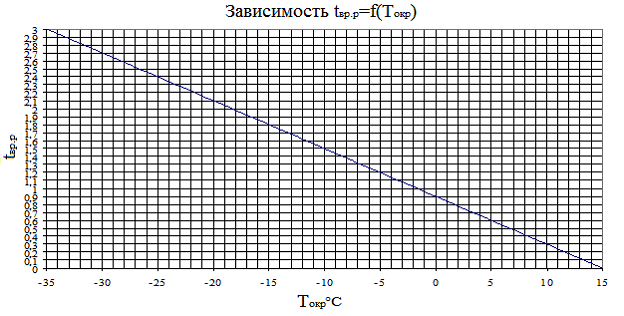
Fig. 2 – Dependence trunning time=f (Tambient)
3) The combination of above dependencies enables to get new trunning time=f (Ka).The Fig. 3 includes the dependence graph trunning time=f (Ka)
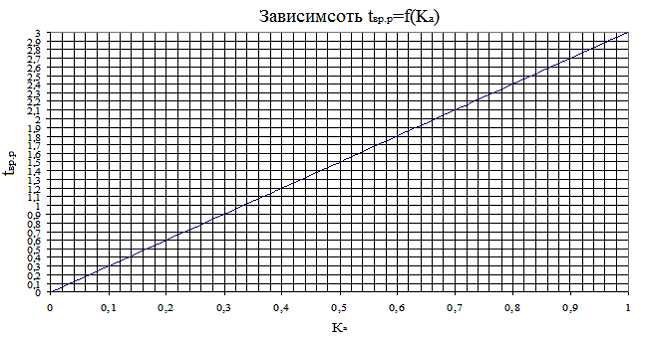
Fig. 3 – Dependence trunning time=f (Ka)
The table values of the latter dependence give the values of the time of room heating and the moment of switching on the heating system for the unconditional implementation of the requirements to the room temperature.
To receive the dependence of the heating time on the active operation coefficient it is necessary to identify the dependencies Ka=f (Tambient), trunning time=f (Tambient), which is not always possible due to the time constraints.
As an alternative, it is designed a portable automated plant for determining the TPP and a control program for it [16]. With its help, we determine the appropriate coefficients and values under the experiment conducted in the object studied using the following algorithm:
1. It is set the object temperature – Tinternal.
2. It is determined the average ambient temperature during the study [°C]:
where ![]() - ambient temperature in the i-th time of the study.
- ambient temperature in the i-th time of the study.
3. It is determined the total area and volume of the object by exterior measurement.
4. It is determined the average power consumption for maintaining the desired temperature![]() :
:
5. It is determined the heat transfer coefficient![]() :
:
.gif) (4)
(4)6. It is determined the specific thermal performance ![]() [W/(m3• º C)].
[W/(m3• º C)].
.gif) (5)
(5)It was conducted a study on testing of this action algorithm.
The heat source with a power of 262 W was placed in the manufactured model. After carrying out all the necessary actions required to conduct the research, it was maintained the established temperature Tinternal=25 ° C for a certain period of time in this facility, the ambient temperature at the initial time of the study was Tambient=14.8 ° C, at the end of the study – Tambient = 15 °С. The study time was 3600 sec. The time of heating source operation to maintain the temperature inside the object amounted to 455 sec. According to the data obtained during the study it was calculated the overall heat transfer coefficient ![]() for the object studied, which amounted to 2.48 W/(m2 • ° C); the design heat transfer coefficient
for the object studied, which amounted to 2.48 W/(m2 • ° C); the design heat transfer coefficient ![]() =2.40 is determined as follows.
=2.40 is determined as follows.
The heat transfer resistance for the object studied was found from the dependence.
where ![]() - heat transfer coefficient of the inner surface of the building envelope,
- heat transfer coefficient of the inner surface of the building envelope, ![]() W/(m2 • ° С);
W/(m2 • ° С);
![]()
![]() - heat transfer coefficient of the outer surface of the building envelope,
- heat transfer coefficient of the outer surface of the building envelope, ![]() W/(m2• ° С);
W/(m2• ° С);
![]() - thermal conductivity of the i-th layer of the building envelope,
- thermal conductivity of the i-th layer of the building envelope, ![]() W/(m • °С),
W/(m • °С), ![]() W/(m • °С);
W/(m • °С);
![]() - thickness of the i-th layer of the building envelope,
- thickness of the i-th layer of the building envelope, ![]() =0.010 m,
=0.010 m,![]() =0.002 m.
=0.002 m.
The design heat transfer coefficient is calculated under the formula:
![]()
![]() W/(m2 • °С)
W/(m2 • °С)
It was also calculated the specific thermal performance ![]() of the object studied as a whole, which amounted to 33.45 W/(m3 • °C).
of the object studied as a whole, which amounted to 33.45 W/(m3 • °C).
The average power consumption expended in maintaining the required temperature inside the object studied, depending on the ambient temperature, is defined by the formula using the heat transfer coefficient and taking into account the total area of the object studied on the exterior measurement (W):
The average power consumption expended in maintaining the required temperature inside the object studied, depending on the ambient temperature, is defined by the formula [8, 9, 10, 11] using the specific heat performance and volume of the room by exterior measurement ![]() :
:
The coefficient of active work is determined by the formula (1).
It was conducted the natural experiment to verify the data obtained by calculation, compared with the experimental way.
The experiment was conducted at Tambient in the range of 6, 7, 8,9,11, 10, 12 °C.
The Fig. 4 includes a graph Ka=f (Tambient) obtained from the experimental and calculated data.
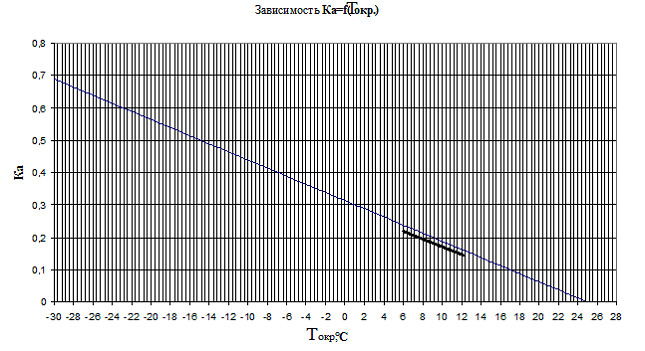
In order to find a warm-up time of the object, depending on the ambient temperature, it is necessary to know the equation of the heat mode of the object.
The heat mode of the heated object may be described by the following differential equation [17, 18].
where - ![]() - difference between the ambient and internal temperatures at each time point
- difference between the ambient and internal temperatures at each time point ![]() , Тheating-heating time constant.
, Тheating-heating time constant.
![]() - transfer coefficient on the channel “power of the heating system – internal air temperature” is as follows:
- transfer coefficient on the channel “power of the heating system – internal air temperature” is as follows:
To find the optimum time of the object heating, it is necessary to use the equation adopted in the automatic control theory [12, 13, 14].
![]() (11)
(11)
For the analytical solution of the equation (11) by the method of variale separation, it is necessary to bring it to the following form:
![]()
![]() (12)
(12)
A general solution of the equation (11) will be the function
![]() ,
, ![]() (13)
(13)
were C -integrating constant.
For a given ambient temperature ![]() and a given initial value of internal temperature
and a given initial value of internal temperature ![]() it is necessary to find the value
it is necessary to find the value ![]() :
:
A solution of the equation (11) will take the form
It is necessary to find a constant![]() by the least square method using the experimental data obtained in the course of heating the room at a fixed power of the heating system.The Fig. 5 includes a graph of the object heating.
by the least square method using the experimental data obtained in the course of heating the room at a fixed power of the heating system.The Fig. 5 includes a graph of the object heating.

Let us assume that ![]() , where
, where ![]() ,
, ![]() , it is necessary to find
, it is necessary to find ![]() .
.
As ![]() is a part of the degree exponent, then it will be the easiest way to it find out by creating a functional for the least square method as the square of difference of the natural logarithms.
is a part of the degree exponent, then it will be the easiest way to it find out by creating a functional for the least square method as the square of difference of the natural logarithms.
![]() (17)
(17)
To find the minimum of this functional, it is necessary to find its derivative and ![]() equate to 0.
equate to 0.
![]() (18)
(18)
Then it is necessary to solve the resulting equation for x
 (19)
(19)By substituting the experimental data, we obtain ![]() .
.
By substituting the data obtained, the time constant ![]() amounted to 16.4 h for this object.
amounted to 16.4 h for this object.
And it is necessary to construct the dependence graph of trunning time on Tambient for Tambient from -30 °C to +12 °C by the formula:
The Fig. 6 includes the dependence graph of heating time trunning time on Tambient.
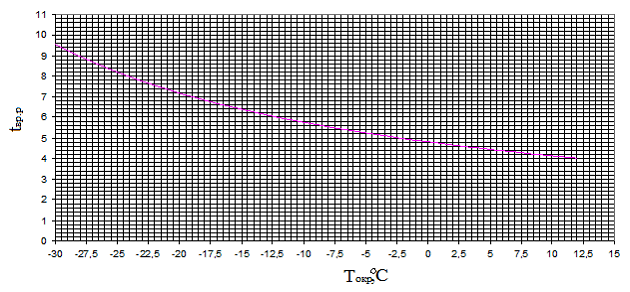
Fig. 6 – Dependence trunning time=f (Tambient)
A combination of functional dependencies shown in Fig. 4 and 6 enables to obtain a dependence trunning time=f(Ka) on the results of experiment on determining the thermal-physical properties of the object.
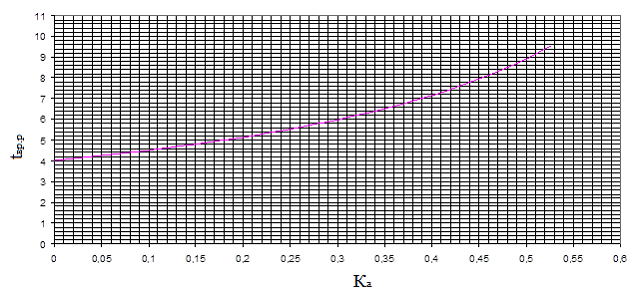
Fig. 7 – Dependence trunning time=f (Ka).
Summary. The dependencies obtained provide an opportunity to build the discrete control algorithm increasing the efficiency of the existing district heating control systems, which helps to reduce the costs and reduce the payback period of the automated heating control systems.
Conclusion. The effective management of heating system is one of the areas of study aimed at optimizing the energy source consumption. The equipment of existing autonomous heating systems with the control devices with the pre-installed algorithm increases the life of equipment and reduces the heating costs.
References
- Autonomous heating systems based on solid-phase heat accumulators using night electric energy or/and surplus energy from wind power stations and/or solid fuel. URL: https:// www.enterprise-europe.co.uk /content /search /profil-detail/?TechRef=12%20RU%2086FG%203P3H.(Access date: December 16, 2015)
- Gerard O’Driscoll., 2014. Manage Your Smart Home With An App!: Learn Step-by-Step How to Control Your Home Lighting, Thermostats, IP Cameras, Music, Alarm, Locks, Kitchen and Garden with an App! Create Space Independent Publishing Platform.pp: 291.
- Zie Bik Andrzej Hoinka Krzysztof., 2014. Energy Systems of Complex Buildings (Green Energy and Technology). Springer, pp: 346.
- Martin Hollender., 2012 .Collaborative Process Automation Systems. International Society of Automation.pp: 408.
- Fine Homebuilding., 2011.The Energy-Smart House. Taunton Press. pp: 192
- Centaur Media., 2014. How to Reduce Your Home Energy Bills. Centaur Media. pp: 163
- Yolande Strengers. 2014.Smart Energy Technologies in Everyday Life: Smart Utopia. Palgrave Macmillan. pp: 224
- Turkin V.P. Water heating systems with THE automatic control. – М.: “Stroyizdat”, 1976 – 268 p.
- Skanavi A.N. Heating: college textbook / A.N. Skanavi, L.M. Makhov. – М.: “Publishing House of Construction University Association”, 2002. – 575 p.
- Bogoslovskiy V.N. Heating: college textbook / V.N. Bogoslovskiy, A.N. Skavani – М.: “Stroyizdat”, 1991 – 735 p.
- Ermolayev N.S. Problems of heat supply and heating of high-rise buildings / N.S. Ermolayev. – М.: “Stroyizdat”, 1949. – 250 p.
- Chistovich S. A. Automatic heat flow control in the heat supply and heating systems / S.A. Chistovich – L.: “Stroyizdat”, Leningrad branch, 1975 – 159 p.
- Kalmakov A. A. Automation and automatization of heating and ventilation systems / A.A. Kalmakov, Yu. A. Kuvshynov, S.S. Romanova, S.A. Shchelkunov – M.: “Stroyizdat”, 1986 – 479 p.
- Blagikh V.T. Automatic control of heating and ventilation / V.T. Blagikh. – Chelyabinsk; “South-Ural Publishing House”, 1964 – 212 p.
- Panfilov S.A., Kabanov O.V., Khremkin A.S. Certificate No. 2016612034 – The program for the system of automated determination of thermal-physical properties of the object studied. Date of state registration of the program for the ECM – February 17, 2016.
- Panfilov S.A., Kabanov O.V., Khremkin A.S. The portable automated plant for determining the TPP of the object studied. The utility model application No. 2016109487 dated March 16, 2016.
- Nagornaya A. N. Modeling and control of the building heat mode / A.N. Nagornaya, V. I. Panferov, E. Yu. Pashnina // Proceedings of the International Scientific and Technic Conference “Theoretical Foundations of Heat and Gas Supply and Ventilation”. – М.: “MGSU”, 2005 – 280 p.
- SokolovE.Ya. Central heating and heating networks: college textbook / E.Ya. Sokolov. – М.: “MEI” Publishing House. – 472 p.
- Kabanov O. V, Panfilov S. A, Barycv V.I An overview of modern methods for the determination of thermal properties of materials and objects using electrical devices. Coll. nauch. trudov. The development of technical sciences in the modern world. Issue II. Voronezh, 2015. p.178 -180.
- Kabanov O.V, Panfilov S.A. Modern methods for the determination of thermal properties of objects. XLIV Ogarevsky reading. Proceedings of the conference: in 3 parts. Responsible for issuing P.V Senin. – Saransk: the muzzle. state. University Press, 2016. pp 156-160.
- Kabanov O.V., Panfilov S.A., Hrёmkin A.S., Bobrov M.A. Development of the method for determining thermal properties of objects. Scientific and Technical Gazette Volga. №5 2015. – Kazan. pp. 253-256.
- Hremkin A. S., Kabanov O.V., Panfilov S.A. The method for determining the thermal properties of construction projects. Journal of the East Siberian State University of Technology and Management. №5 (62). Ulan-Ude 2016 - M .: Publisher VSGUTU. pp.49-57.
- Kabanov O.V., Panfilov S.A., Andronova O.A. Analytical review of the assessment methods (measurement) thermal characteristics of the object. Topical issues of science and technology. Collection of scientific papers on the results of the III International Scientific and Practical Conference. Samara: ITSRON, 2016. pp 107-111.
- Kabanov O.V., Panfilov S.A. Alternative energy sources and their prospects. XX Materials of scientifically-practical conference of young scientists and students of the National Research Mordovia State University. N.P Ogarev. Saransk: Ogarev State University, 2016. pp 164-169.
- Kabanov O.V., Panfilov S.A. Modern methods for determining the thermal properties of the object. XX Materials of scientifically-practical conference of young scientists and students of the National Research Mordovia State University. N.P Ogarev. Saransk: Ogarev State University, 2016. pp 169-174.
- Kabanov O.V., Panfilov S.A. On the question of the use of alternative energy sources. Actual problems of energy supplies AIC VII international scientific-practical conference. Saratov: CSA, 2016. pp. 78-83.
- Kabanov O.V., Panfilov S.A. Impact of power quality in the work of energy-saving equipment. Problems and prospects of development of domestic lighting, electrical engineering and energy materials XII All-Russian scientific conference with international participation at the III All-Russian lighting forum with international participation. Saransk: IP Afanasyev, 2015. pp 526-533.
- Kabanov O.V., Panfilov S.A. Algorithm for automated heating system control. Problems and prospects of development of domestic lighting, electrical engineering and energy materials XII All-Russian scientific conference with international participation at the III All-Russian lighting forum with international participation. Saransk: IP Afanasyev, 2015. pp 534-538.
- Panfilov S. A., Kabanov O. V. Energy Saving Algorithm for the Autonomous Heating Systems. International Journal of Advanced Biotechnology and Research (IJBR) ISSN 0976-2612, Online ISSN 2278–599X, Vol-7, Issue-4, 2016, pp. 1395-1402.
